Killdeer are small shorebirds with absolutely nothing against deer. Their name is a reference to the sound of their call, and a bit of a stretch at that. These birds usually live along the beach, but they also roam inland across their range. They inhabit North, Central, and parts of South America. Read on to learn about the Killdeer.
Description of the Killdeer
Though small, this species is relatively large compared to other shorebirds. They range between 8 and 11 inches in length, and most weigh no more than a few ounces. Like most shorebird species, Killdeer have cryptic, or camouflage, coloration.
Their bodies are light brown, their undersides are cream, and they have several dark black bands. One band runs from the eyes across the forehead, the next around the neck, and the third across the chest.
Interesting Facts About the Killdeer
Even though these birds don’t kill deer, that doesn’t mean they aren’t interesting little birds anyway. Learn more about what makes these birds so unique below.
- Dedicated Parents – Like many other members of the plover family, Killdeer make excellent parents. When a predator gets too close to their chicks, these birds frequently imitate injury, like a broken wing. The parent pathetically hops along, trying to draw the predator away from their babies.
- If at First You Don’t Succeed… – Of course, it is important to have a backup plan, because not everything that could hurt your young is doing so on purpose! These birds sometimes build their nests in pastures and on farms, where they have run-ins with large hoofstock. If a cow ambles too close to the nest, the Killdeer puffs up its feathers and charges to scare the cow away.
- Scrape Ceremony – These birds have a surprisingly interesting method of choosing their nest site. In fact, researchers have dubbed their behavior a “scrape ceremony.” The pair moves through several likely locations, and the male scrapes away a shallow nest spot. If the female likes the spot, she switches spots with him.
Habitat of the Killdeer
Unlike most plovers, these birds live in a variety of different habitat types. Some of their favorite habitats are still beaches, sandbars, tidepools, and shorelines. However, they also live in savannas, grasslands, meadows, and even forests. These birds also live in more urban areas, like parks, gardens, pastures, and farms.
Distribution of the Killdeer
Killdeer live across much of North and Central America. Their range also extends into northern South America. At the northernmost reaches of their range, these birds migrate to warmer areas during the coldest months.
Throughout the southern United States, into Mexico, and along most of the coastline, these diminutive creatures stay year-round. The birds that migrate from the northern regions spend their winter in Central and northern South America.
Diet of the Killdeer
These birds also vary from most of the plovers in their dietary needs. They are omnivores, which means that they eat both plants and small animals. The rest of their diet is similar to their relatives, and consist mainly of small invertebrates.
Their plant-based diet is primarily fruit, particularly berries from a variety of plants. Some of their other food sources include insects, insect larvae, small crabs, shrimp, and more.
Killdeer and Human Interaction
Humans and Killdeer usually get along swimmingly. Because these birds are none too picky about their habitats, and they have a vast range, habitat destruction causes minimal damage for them. In fact, these birds usually thrive in agricultural areas and parks.
To top it all off, they are great for the farms and pastures that they live in. These little birds hunt mosquitos, locusts, and a variety of other pests. The IUCN lists the these birds as Least Concern.
Domestication
Humans have not domesticated Killdeer in any way.
Does the Killdeer Make a Good Pet
No, Killdeer do not make good pets. Even though human activity does not currently threaten them, it is still illegal in most places to own, capture, harass, or kill one. The Migratory Bird Act, protects these and most birds in the United States, from harm.
Killdeer Care
In zoos, these birds have somewhat more flexible housing requirements than their relatives. They live in a variety of ecosystems, so they do just as well in a shoreline habitat as they would in an enclosure with no water and dense shrubs.
Most of these birds in zoos live there because they became injured and could no longer survive in the wild. Zookeepers feed them a wide variety of foods, including mealworms, crickets, shrimp, krill, small fish, and commercially produced pelleted diet.
Behavior of the Killdeer
Outside of the breeding season these birds are solitary. They live alone, but are not territorial or aggressive towards others of their kind. Sometimes they congregate in areas with lots of food, but they usually disperse after a short period.
Once the breeding season starts, pairs form and establish territories. They choose their territory based on the best feeding opportunities nearby.
Reproduction of the Killdeer
Killdeer pairs are monogamous, which means they continue to breed with the same partner year after year. Pairs work together to build their makeshift nest, which is really just a shallow depression on the ground. The female lays an average of four eggs in a clutch, and both parents help incubate them.
The eggs hatch after about three weeks to a month. After hatching, the chicks begin walking and following their parents almost immediately. Once they are about a month old, the chicks can care for themselves.

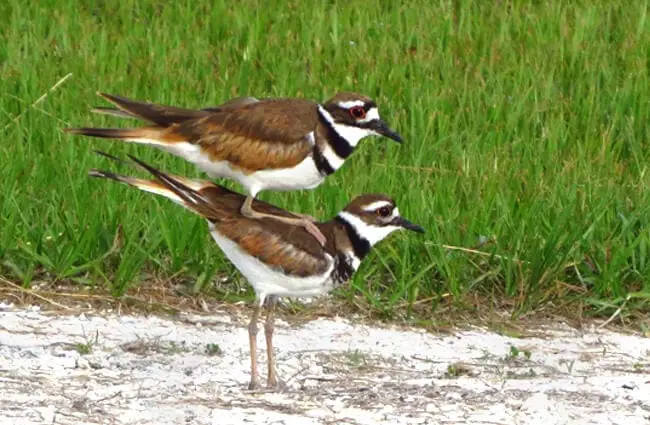
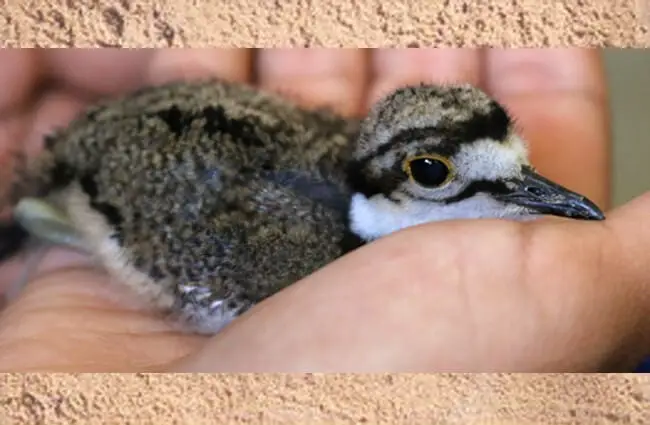
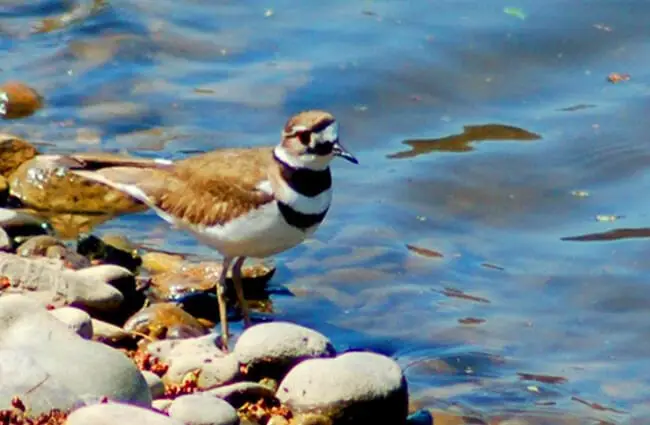
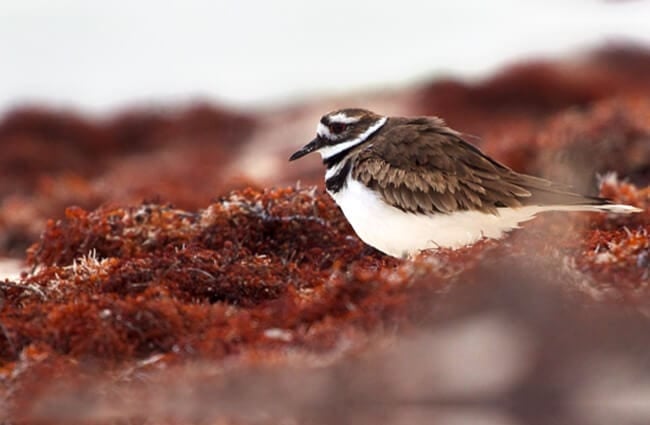

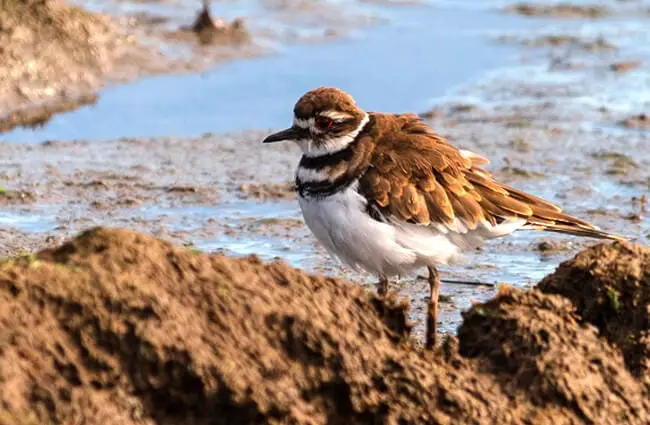
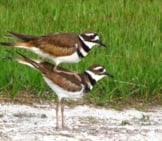
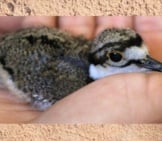


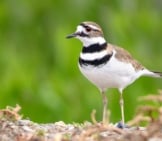
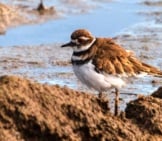
![Red Angus Closeup of a beautiful Red Angus cowPhoto by: U.S. Department of Agriculture [pubic domain]https://creativecommons.org/licenses/by/2.0/](https://animals.net/wp-content/uploads/2020/03/Red-Angus-4-238x178.jpg)


![Red Angus Closeup of a beautiful Red Angus cowPhoto by: U.S. Department of Agriculture [pubic domain]https://creativecommons.org/licenses/by/2.0/](https://animals.net/wp-content/uploads/2020/03/Red-Angus-4-100x75.jpg)

